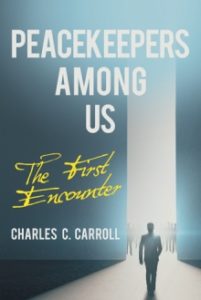The following are the words of Charles C. Carroll, Archway Publishing author of Peacekeepers Among Us.” Learn more about Charles on his author website, Facebook page, and Twitter account. Download the Archway Publishing free publishing guide for more information on our supported self-publishing services.
Developing a Scene
One approach to writing your novel is to construct it scene by scene guided by your overall plot. Writing craft resources describe the various components of a well-developed scene. The components generally discussed are the role of the protagonist actions, point of view, scene and plot relationship. In addition to conflict and tension, timeline and physical setting, imagery, and the balance between narration and dialogue.
Creating Your Skeleton

For the emerging writer, the challenge becomes how to put these components together in a fashion that will produce a memorable scene. You still want to make sure it serves your plot while developing your characters and advancing the story. In thinking about how to do this, the word “anatomy” came to mind and led me think of a skeleton. I thought, maybe, a scene is like a skeleton to which we must add “meat.” Thus, my “skeleton approach” to scene development. In this approach, rather than use all 206 bones in the adult human, only gross anatomy, the head, arms, torso, and feet are used. This approach works when you realize that each scene is a mini-story itself. Now let’s explore how this approach can be applied.
The Head
Just as with the beginning of any piece of writing, the writer must get the reader’s attention. After reading the first one or two sentences, the reader should feel that something interesting is coming. Here’s where the writer should evoke an emotion of expectancy. This can be done with either narration that provides an intriguing setting or with dialogue that shows tension between characters. In either case, the reader must be pulled in and ask themselves: what’s next? However, in the process of hooking the reader, the writer must remain mindful that the scene doesn’t stand alone; it’s a part of a bigger picture and thus the scene must contribute to and move along the overall plot. This may be the place where the scene’s point of view is established, although not necessarily.
The Right Hand
Since the scene is one event in the overall story, it might be necessary to provide some backstory. Of course, the need for this may be minimal, since any given scene is a continuation of the storyline. However, the writer needs to be mindful at this point as to whether any backstory is necessary to make the scene fit neatly into the story line.
The Left Hand
Unless it’s the last scene in the book and you don’t want to write a sequel, it might be appropriate to plant a hint about what is to come later. Of course, the body of the scene may do this as well; however, don’t hesitate to purposefully plant an intriguing clue about the future in your scene. Just be sure not to do this at the expense of any of the other components of the present scene.
The Torso
Just as the torso makes up the bulk of the body, this is where the body of the scene is written—where the action occurs. This part should probably be mostly dialogue. Of course, that depends on the story that is being told. However, the writer must remember the adage, “show, don’t tell.” When narration is used, it should be strategic, for example, to avoid long stretches of dialogue that doesn’t add to the scene or to make transitions in the story.
The Feet
Just as the scene must move the overall story along, the scene itself should move along at a pace that keeps the reader engaged. What is the appropriate pace? Only the writer can answer that, but remember the reader is “looking over your shoulder” as you write the scene. Therefore, the question becomes what pace will keep the reader engaged? One conceivable way to answer that is to imagine yourself as the reader and ask yourself, objectively, if you would remain engaged.
Writing fiction is a creative process and most of the craft tools are non-definite recommendations. The tools must be molded to the project at hand rather than looked at as absolutes. The method of writing scenes recommended here should be taken in that context—it’s a guide giving the writer a place from which to depart.
Archway Publishing is always looking for content for its blog. If you’re an Archway Publishing author and would like to share an idea for a guest blog post, please tweet the Archway Publishing Twitter account @ArchwayPub or send us a message at the Archway Publishing Facebook page
